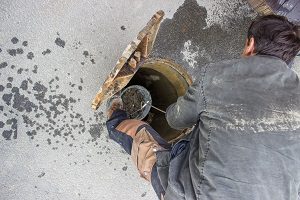Learning More About Water and Concrete
Water is a crucial part of mixing concrete. In fact, when mixed with water, concrete is formed through a chemical reaction known as hydration, when bonds are formed between water molecules and cementitious materials to form hydrates. Hydration bonds are the reason concrete is a durable building material. However, too much water can cause serious issues for concrete, including erosion. Still, what is it that can make water so dangerous to a concrete mixture? Here is some valuable information about water and concrete.
Water-to-Cement Ratios
One of the most important factors in cement mixing is the water-to-cement ratio. If too much water is added to the mixture, the concrete will become overly porous and erode more quickly. When too little water is added, the concrete will not be able to strengthen properly. Porosity is an important factor in concrete, since high porosity increases the moisture evaporation rate of concrete, creating additional (and sometimes excessive) pressure on the surface. This can impact how well your concrete holds up over time.
Sick Building Syndrome
Evaporation is not the only concern when it comes to porous concrete. In fact, porous concrete with excess moisture can be at serious risk for sick building syndrome. Excess moisture can create a breeding ground for bacteria and mold, and if left unchecked, this can create a health hazard for anyone who uses the building. Well-maintained ventilation is a crucial element to preventing sick building syndrome or other health issues that can stem from excessive bacterial, fungal, and mold growth, but a good way to prevent your building from facing these issues is to prevent excessive moisture within the concrete.
Flooring Expansion and Cupping
When moisture builds up within concrete, it can cause pressure on the surface. Over time, excessive pressure can cause issues with your building’s structure. For example, the pressure buildup can cause issues with your concrete flooring in the form of flooring expansion or cupping. Cupping occurs when the sides of your flooring ride up to a higher level than the center of your floor. This warping can cause structural issues with your home or commercial building, not to mention making the floor dangerous or frustrating for everyday use. Similarly, flooring expansion can result in cracking and warping that can cause structural issues with your building as a direct result of excessive water in the concrete.
Prioritize Safety with G&M Services
G&M Services is proud of our employees and the dedication they have for safety in the workplace. We reward our employees for displaying positive safety practices. We incorporate weekly and monthly discussions and meetings to ensure that all involved are aware of how to handle equipment and potential situations that could occur during a project.
G&M Services offers services in the way of concrete drilling and sawing, concrete scanning, and Firestop. To get started with us, call today at 410-787-8828 or visit our contact page. Follow the official company page today on Facebook, Twitter, and LinkedIn.









